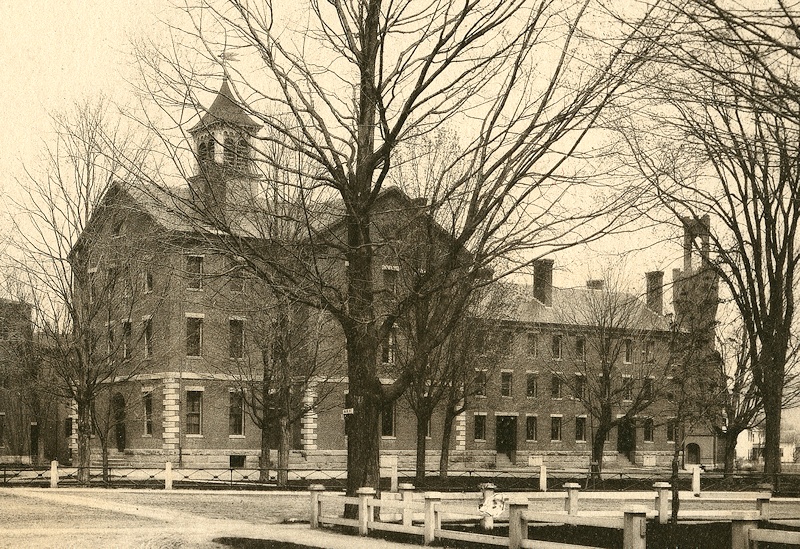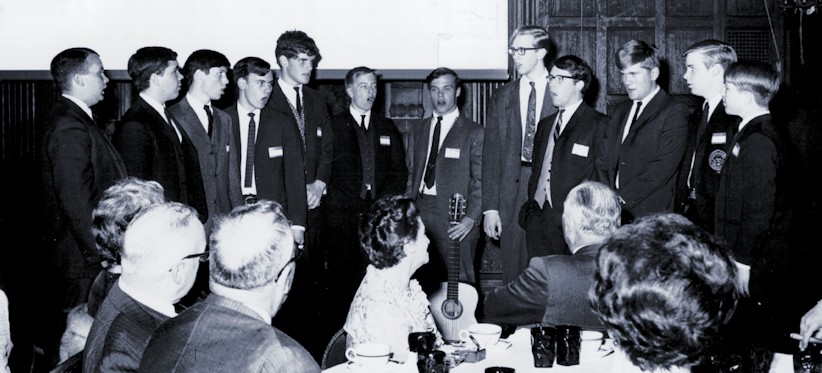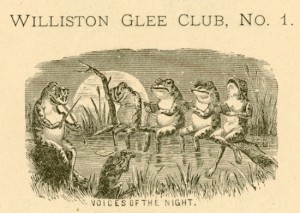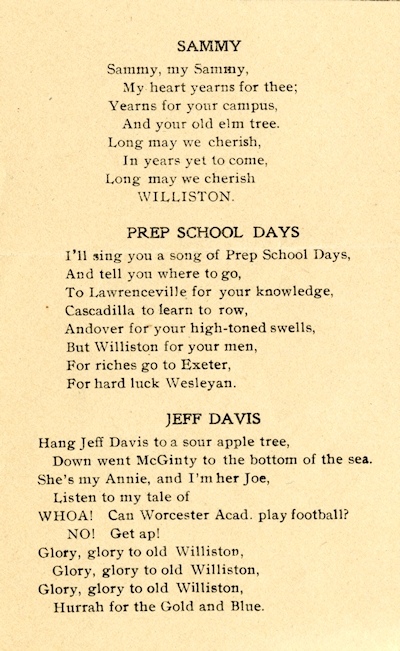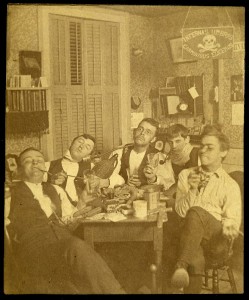
The 1870s and ’80s saw the rise of several secret societies or fraternities at Williston Seminary. Initially there were four: Iota Zeta, L.L.D., Pi Beta Pi, and F.C. A fifth, Phi Rho Alpha, appeared somewhat later, although its existence was sometimes not acknowledged by the four “legitimate” societies. History knows relatively little about them; as secret organizations, they kept their petty confidences, and worse, to themselves. So we have no idea what the initials stood for, not even for the two societies that didn’t affect Greek names. We do know that their membership was selective; that at least some of their alumni remained loyal to the clubs, often at the expense of loyalty to the school, and that they posed as “service” organizations: in 1916, for example, their leaders formed the first Student Council.
None of the preceding can be said of a sixth fraternity, Sigma Eta Delta.
In fact, the Greek letters ΣΗΔ were a rendering of the society’s real name, the South Hall Devils. (Since classical Greek doesn’t accommodate the “H” sound, it was the preference of the membership to spell “Eta” with an apostrophe: Sigma ‘Eta Delta.) The group was formed in the winter of 1889, mostly to poke fun at the elite, thus much-resented, fraternities. Membership was open to any resident of South Hall, the dormitory with the least desirable and least expensive rooms — thus a dorm shunned by any self-respecting (and they were nothing if not that) frat boy.
